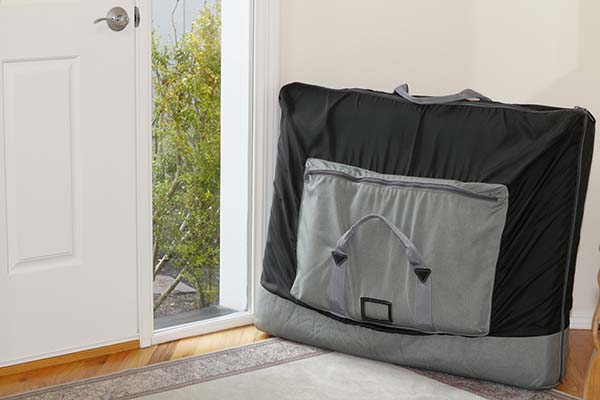
Is It Safe to Do Outcall Massage Services?
By Tessa Crume, PhD, MSPH
(Note: From the beginning of the COVID-19 crisis, many ABMP members have been asking for guidance on doing outcall services at the client’s home. We have not found reliable guidance to follow on this, so we reached out to epidemiologist Tessa Crume, an associate professor in the Epidemiology Department at the Colorado School of Health at the University of Colorado Anschutz Medical Campus, to get her expert advice on this member’s question.)
Q: What are your thoughts on continuing outcall services with longtime clients who have their own equipment (table) and supplies in their homes, while making sure to conduct appropriate pre-session screening questions that would include others in the household, as well as the client?
A: If you are going to provide service in a client’s home, I would consider how you can maintain the same level of caution as outlined in the ABMP Back-to-Practice Guidelines.
It will be critical to perform a pre-session health intake that asks questions about recent fever, COVID-19 symptoms, and known contacts with someone diagnosed with COVID in the past 14 days, for both the client and anyone else in the household. (Note: You can find ABMP’s updated COVID-19 forms and printables here.)
Ask the client to prepare the room in which the service will occur ahead of time. Preparation should include cleaning and sanitizing all surfaces with EPA-approved products, including the table, bolsters, chairs, light switches, and doorknobs. Open a window and, if available, place a fan in the window pointed out so that the airflow is directed out of the room. Place clean sheets on the table. Ask the client to wear a face mask during the entire service.
Wash your hands before heading to the client’s home and, when you arrive, put on your mask before approaching the door. Keep your mask on the entire time and don’t touch it. If you do touch it, apply hand sanitizer, remove the mask, and put on a new one. Decide beforehand what type of personal protective equipment (PPE) you will wear during the session. If available, I would wear a mask, gloves, a gown, and eye protection. The ABMP Back-to-Practice Guidelines has a wonderful video on how to use PPE for massage therapists.
When you arrive, conduct the health intake interview and take the client’s temperature with a no-touch thermometer. Discuss your comfort level, and the client’s comfort level, with facial massage. It is completely reasonable to skip procedures that would require removal of face masks. Apply hand sanitizer before beginning the session, and follow the ABMP Back-to-Practice Guidelines for in-session protocols.
While this would be hard for me to follow, avoid handling their pets. No matter how cute or friendly or adorable they are, DO NOT touch their sweet, furry faces.
After the service, don’t remove your mask until you’ve left the house. If possible, use the client’s bathroom to wash your hands thoroughly with soap and water before leaving, and use hand sanitizer once you’ve left the home and removed your mask. If not possible to use the client’s bathroom, once you’ve left the house, remove your mask, use a hand-wipe product to remove oil and dirt from your hands, and then use hand sanitizer as directed.
Bring a paper bag with you and place the mask and any other items you brought into the client’s home into the bag to be cleaned later. Once you are at your home, wash your hands with soap and water. Change your clothes and wash them at the highest temperature recommended on the clothing label.
author bio
Dr. Tessa Crume is an associate professor in the Epidemiology Department at the Colorado School of Health at the University of Colorado Anschutz Medical Campus. Her research focuses on the development and utilization of public health surveillance systems to understand the burden of disease. She has been an academic researcher since 2011, before which she worked for a decade as an applied epidemiologist at the state and federal level, analyzing surveillance data and evaluating public health impact. She has taught the core epidemiology class at the Colorado School of Public Health for nine years.